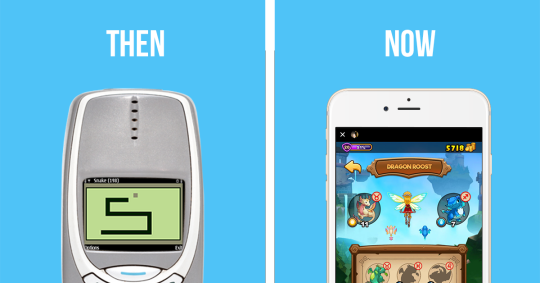Differences between phones then and now
Another first for the Finnish phone-maker, the was the first handset to feature a WAP browser. That meant it was capable of browsing the internet. Or at least a stripped down and incredibly slow version of it that was of little use to most people. Motorola Timeport. A must-have for self-proclaimed citizens of the world. And the hordes of Gen X-ers heading to Asia on the backpacker trail. As was the fashion of the time.
Mobira (Nokia) Senator [1982]
The first serious attempt at an internet-enabled mobile phone, the Communicator was ahead of its time. But on the plus side, it had 8MB of storage and a full keyboard, you could use it as a personal organiser, as well as a web browser and email support. Billed as the first commercially available camera phone, Sharp's effort was only sold in Japan and had a camera resolution of 0. Legendarily sturdy, the was the phone that launched a thousand memes. And with million units shifted, stands as one of the biggest-selling phone of all time.
Cellphones vs. Smartphones
The best part of a decade and a half and one smartphone boom later, it remains the best selling mobile phone of all time. The last great flip phone, the Razr was impossibly thin at only 14mm. Unusually for the time, it also had an aluminium casing that looked achingly slick. Ironically, the overwhelming success of the Razr was probably the main cause of the downfall of Motorola. The first true Blackberry phone, which integrated a phone with fully functioning email, web browsing and the much loved Blackberry Messenger.
History of mobile phones and the first mobile phone
It was the lightest and smallest GSM phone available at the time and featured the easy to use Nokia menu system. The was the first to popularise the unmistakable small-candybar shape which was the work of British designer Alastair Curtis. The result was million sales worldwide. Within a year, the smaller was released.

It was not a revolutionary update from its predecessor, but its compact design, four built-in games Pairs II, Space Impact, Bantumi, and Snake II and the fact it could support long SMS messages of up to characters made it a success. And the best part of 20 years later, still inspires memes and favourable comparisons to fragile, modern-day smartphones. Featuring an updated design based on the original candy bar shape, the version 2.
Mobile phones have changed the world, for better or worse | Opinion | The Guardian
The Nokia gained a cult following thanks to its durability. Humorous videos and memes abound about the phone's legendary toughness of the In the wake of BlackBerry's success, physical keyboards were quite the thing in the early s. The was notable with its unusual fold-out keyboard, with built-in email and support for Blackberry emails. The early s were also a time of wild experimentation and Nokia seemed to aim at to release a phone to suit every taste.
Arguably over substance.
Then & Now: The evolution of mobile phones
Take the roughly square , for instance. Its shape meant it was difficult to hold in one hand. And because you had to hold it at an angle, it was hard to make calls too. Then came the that was essentially a keyboard-shaped phone.
- download avi files into ipad.
- The History and Evolution of Cell Phones.
- Mobile Phones.
Nokia was aware that the shape was seen as unconventional, to say the least. The was one of the early experiments with keyboard layout. It was marketed as a high-end phone, but the rotary-styled keypad design made it hard to use for texting. A relatively ordinary variant on the series, the had a system of LEDs on the sides that could be setup to flash in different colours. But the twist was that the camera could only be enabled by swivelling the bottom half.
Probably the oddest of the lot, the had neither a touchscreen or a keypad. And if you wanted to send a text message, you had to scroll through each letter with a physical spin dial.
It came with the longest list of features you could imagine at the time: wifi, web browsing, a five-megapixel camera and even built-in GPS. It sold well, registering over 1 million sales in the UK alone. Mobile payments also emerge with Apple Pay and Android Pay offering users the possibility of buying things with their smartphone. The fifth-generation network promises vastly superior data speeds and reliability, boosting ultra-high-resolution video streaming and mobile gaming.
- The List: New phone vs. Old phone | Greenbot!
- The History and Evolution of Cell Phones.
- best free keyboard app for samsung galaxy s2.
Handset design trends continue to push for an all-screen experience, with OnePlus introducing the pop-up selfie camera to its flagship 7 Pro device to do away with the notch altogether. Evolution of the Mobile Phone From simple to smart, mobile phones have transformed dramatically to become information and communication hubs fundamental to modern life. Features From This Era. Image: Nokia , Image: Siemens S10, Image: Sony Ericsson T68i, Image: BlackBerry Pearl , Image: iPhone 1 st Generation , Digital phones use the same radio technology as analog phones, but they use it differently.
Analog systems don't fully use the signal between the phone and the cellular network -- analog signals can't be compressed and manipulated as easily as true digital signals. This is why cable companies switched to digital -- to fit more channels within a given bandwidth. Digital phones convert your voice into binary information 1s and 0s and then compress it see How Analog-Digital Recording Works for details on the conversion process.